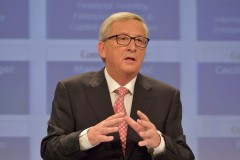The recently announced major €315 billion investment policy by EU to bring development and work back to Europe has evoked some expectations in the field of sustainable growth.
The European Investment Plan is the brainchild of new EC President Jean-Claude Juncker, aiming to leverage huge private sector capital for long-term investment into infrastructure and the promotion of small and medium-sized enterprises.
The recent EU agreement on new climate-energy targets for 2030 has set up the guidelines for energy infrastructure investment in future.

By 2030, a 40 per cent reduction in greenhouse gas emission has to be achieved, which requires constant investment in low-carbon infrastructure at enhanced levels.
It will take trillions of investment to decarbonize the whole European economy as every single infrastructure project needs association with the total imperative of reducing emissions.
For this, the initial step to be taken is to ensure that infrastructure investment is climate-smart.
These new grid projects should not try to connect coal plants and low-carbon projects should be prioritized even when they cost a bit more. This will boost the economy, decarbonizing Europe at lower overall cost.
Institutional investors having interest on real assets can invest directly into projects once they are off the ground.
Project bonds are other means of investment which is often used to finance lending by the development banks like the European Investment Bank to specific projects.
However, energy and grid companies are long-term owners of projects as well developers. But, institutional investors invest in assets that have already been built and are operating, with minimum construction risk.
As a result, investors are hurrying to buy operational assets, but the increase in the number of projects being developed does not match the need of investors.
However, the question is whether these players are capable of delivering the transition from financial to economic risk-taking.
Due to the underinvestment happened in recent years, opportunities are numerous for projects with quick payback.
Need of the time is new infrastructure companies that start with fresh balance sheets without considering the economics and financials of individual projects.
Instead, they should optimize infrastructure across the board, taking long-term views on infrastructure modernization able to launch low-carbon in the most efficient manner towards a net zero carbon economy by 2050.
The EU’s €315bn initiative is a golden opportunity to pave the way for the net zero carbon economy of the future. The EU leaders have to keep in mind their recent commitment to the 40 per cent greenhouse gas reduction target and work to that goal.
Sabeena Wahid
[email protected]

